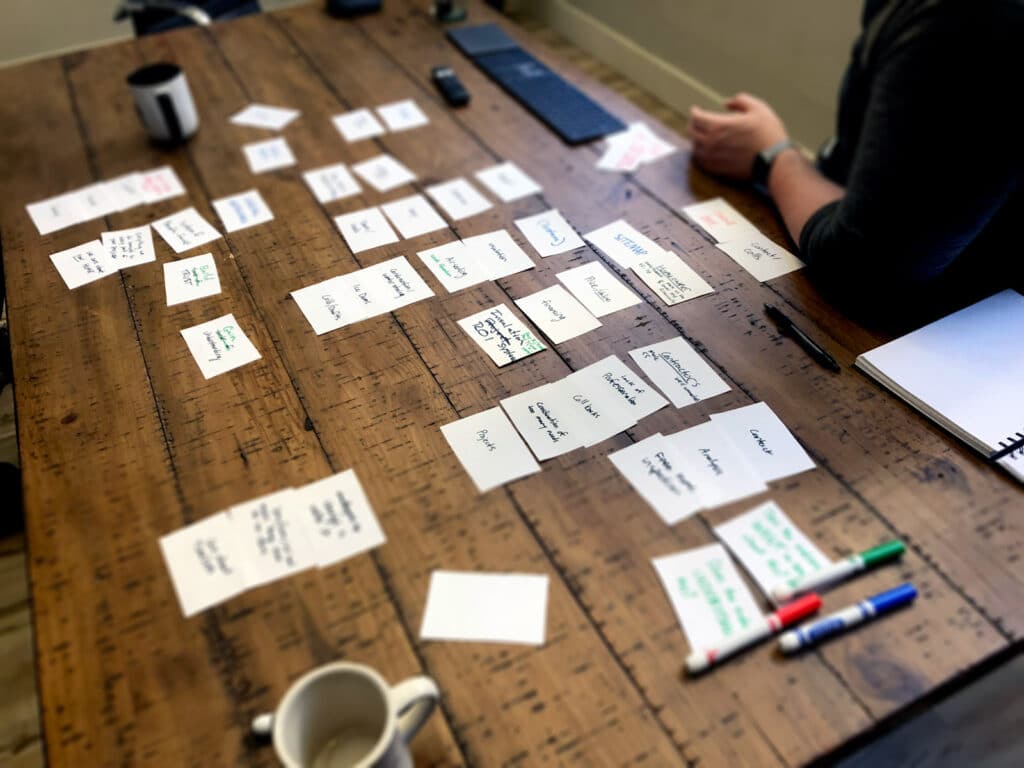Have you ever come across a website with so many pages that you’d rather wait for the film adaptation?
Whatever job you have, you most likely do it five days each week, and eight hours each day. So naturally with all of that time comes an abundance of things you could talk about, whether it be your day-to-day operations or the minute details and PDF forms of every step of your process.
And for many organizations that are inexperienced in developing customer-facing content, it may seem like the most logical solution to take existing content from every nook and cranny. There’s a great deal of information that at some point will reach the end user, so if we give it to them now, they will studiously prepare for our first encounter with all questions answered. Right?
Now multiply this mentality by how many departments you have in your organization. Because now everyone has their own agendas, services, audiences, writing style, and terminology. And as the organization grows and new team members come in, they take over a small facet of the website. Soon you’ll have more pages than a dictionary but without the clear navigation standard of a dictionary. Try looking up a definition without alphabetical order.
And as the many people come together over a long period of time, and department heads start to see the other departments adding more content, they themselves try to keep up. And eventually the purpose of the website itself starts to get lost.
Remember the goal of the website
Putting first things first, what ultimately defines a successful customer-facing website? I’ll bet you can guess: the customer. They’re the whole reason we’re here. If we fail at accomplishing their goals, the whole operation fails.
While most people would answer that question correctly in a verbal pop quiz, their actions would say otherwise. So often the website drifts into an appeasement of donors, bosses, and departments. The lofty platitudes of “We’re here for you” fall short when the user starts to only hear “We’re here to talk about ourselves.” Whether it’s ego or ignorance, this is a problem that needs to be dealt with in order to have a successful site.
The user needs to know that their problems can be solved and their life can be better. And don’t worry stakeholders—writing content from that perspective will have a ripple effect to the rest of the business. The more successful the end-user can be at finding what they need or want, the more successful the business. It’s such a logical connection but it can easily be forgotten in the day to day and year to year changes on a website.
We’ll get to a few more headings, but this is the most important part of our conversation here today: you may need a mindset shift that recalibrates every decision in your business to serve your users. From there, everything else will follow.
Assign a website champion
Hopefully it has become clear that the more departments of an organization, the more chance for disorganization. So what can we do to avoid this?
For starters, the site needs someone with a top-level view. Someone who sees the bigger picture of what’s happening with the site and who can make decisions of what can and can’t go in it. And that person needs to be bought into the mindset we’re talking about. With that, they can manage the incoming content requests from other departments and decide wether it fits, and then how to best display it for the user.
And this isn’t a one-time task either. It’s a constant battle of priorities as each stakeholder contends for their own voice to be heard. That’s why we’re calling them a “champion.” They are an advocate for the user who channels the corporate energy into a streamlined message with the BS and fluff filtered out.
Build a website for people
We have worked on websites with single-page sitemaps, and we’ve worked on sites with hundreds of pages. What do they have in common? They were made by people. And I would venture to guess they were made for people too.
People interact with each other. People learn new things. People experience emotions. When engaging in a face-to-face conversation, this is usually obvious. But the further into the weeds that a website might get, the further away the humanity of its users might feel.
We have to write websites to real people—not statistics.
With this approach we can be aware of exactly how and what information is communicated. We should constantly be in a state of getting to know our users and where they are coming from and where they want to go.
Asking the right questions can start to build that intuition:
- Is the user aware that they have a problem?
- What barriers hold them back from solving that problem?
- Does the user understand the words you’re using?
- Does the user even want to understand the words you’re using?
Our vision is to see businesses and communities thrive—a hard thing to do in the midst of confusion. We’ve seen that clear content and design can make the difference between a solving someone’s problem and not. And seeing the rippling benefits that can outstretch to further lift up everyone involved, we can go to work striving for the message that says “We’re here for you” and means it.

